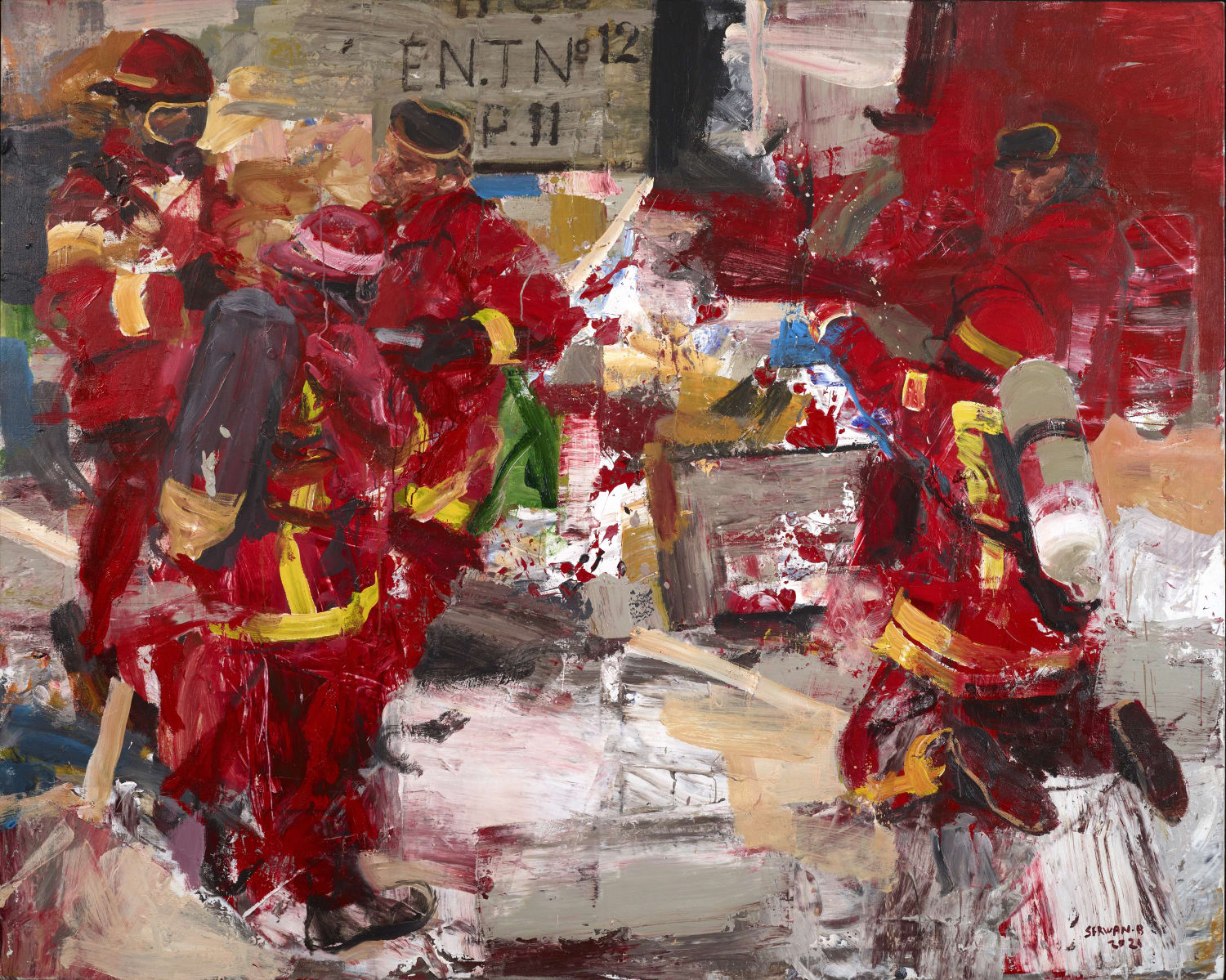Biography
“My work is a reaction to war, not a chronicle. I am repeating the shock over and over again, to rid myself of the nightmare.” — Serwan Baran
Serwan Baran is an Iraqi Kurdish artist born in 1968 in Baghdad. He studied at the University of Babylon, College of Fine Arts, and graduated in 1992. Following his graduation, the artist taught at The Baghdad University, College of Fine Arts, for seven years. Baran participated at the Summer Academy at Darat Al Funun in Amman, Jordan, in 2000, during which he benefited from the mentorship of Syrian master modernist Marwan Kassab-Bachi. He later became a member of the International Association of Art, the Iraqi Fine Artists’ Association, and the International Network for Contemporary Iraqi Artists.
Throughout his post-secondary education, Baran drew inspiration from the environment surrounding the University of Babylon. The institution situated amidst the ruins of the ancient city, the artist was immersed in the legacy of one of the richest civilizations of the ancient world, absorbing the mythology and visual culture of the Babylonians.
Baran’s interest in the histories of the distant past led him to Nimrud, an ancient Assyrian city just south of Mosul, in a quest to find the remains of the legendary tower of Babel. Though evidence of the great tower never emerged, the artist was thrilled when he found an impressive mud structure that stood 400 meters tall. This place became an almost sacred site for the artist, who visited and painted it many times.
After college, the artist attended classes at the University of Baghdad taught by Faik Hassan, by that point, a well-established and influential figure in the region. Though his training had not bound him to the constraints of the techniques that dominated Hassan’s curriculum, Baran still learned a great deal from the prominent artist. Under his tutelage, he discovered the aesthetic power of reductive forms and free lines and further explored the expressive language of color. Baran’s exposure to the clay-rich soil and ancient ruins of Iraq is reflected in his preferred color palette, which draws primarily from earthy browns, reds, and ochres.
During the 1990s, Baran produced works depicting the diverse popular culture of Iraq, incorporating elements of both realism and expressionism into his paintings in varying degrees. Fusing folkloric scenes with daily social happenings, he painted Bedouins in colorful outfits, rural celebrations, aged working men in old souks, and shepherds in natural landscapes. He created pictures that integrated the bitter and the blessed in the Iraqi social panorama, exploring the human condition across all strata of society. Throughout his career, Baran would reflect on political themes as well, conveying his cynical views in strident iconography. Numbers appear in his paintings as symbols of dehumanization, alluding to the reduction of citizens to statistics by careless governments, and distorted portraits of military generals suggest the ethical corruption and hypocrisy of war.
Nearing 2000, Baran had quenched his thirst for social and cultural exploration. He focused more on illustrating horses in motion, accentuating the movement of his gestural brushstrokes and fluidity of his lines. His style began to stray from the semi-realistic, dense compositions, adopting more playful, expressive elements that drifted into figurative abstraction. Though he had painted primarily in oil up until this point, the artist began to experiment with acrylic paint, drawn to the medium by its sensual fluidity.
Since 2003, Baran’s approach has become one of dialogue, juxtaposition, and, above all, experimentation. He has strayed further into abstraction and delved into more vulnerable subject matters, exploring tension, anxiety, and eroticism in recent work. Baran’s latest solo exhibitions have illustrated developments in style as well as the content of his work. In 2013’s Living on the Edge, held by Nabad Gallery in Amman, the artist commented on the contemporary state of the region in a series of emotionally-charged composite portraits, characterized by the high contrast between vibrantly-colored figures and somber, monochromatic backgrounds. These paintings convey existential angst through the artist’s dry humor, populated by exaggerated, distorted characters that variously fuse into one another and pull apart. The sense of disorientation fostered by these paintings is at once personal and social, evoking themes of romance and isolation as well as frustration with contemporary politics. In Canines, hosted by the Agial Gallery in Beirut in 2018, the artist also presented canvases replete with the fusion of bodies; this time, however, the bodies belonged to dogs. Painted in tones simultaneously brilliant and earthy, in brush strokes simultaneously fluid and rough, the paintings explore the capacity of acrylic paint for varying levels of transparency in frenzied images of hounds scrambling as well as sober, skeletal portraits.
The artist currently resides in Beirut.
Works

